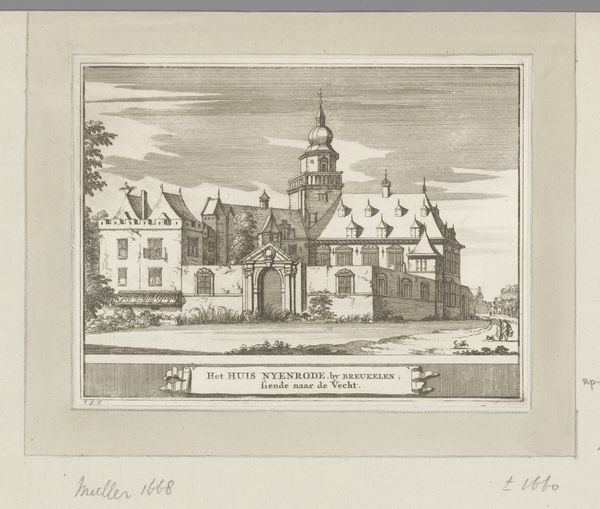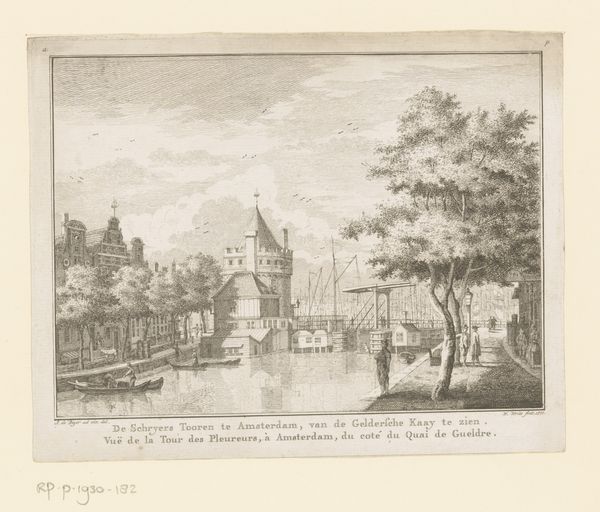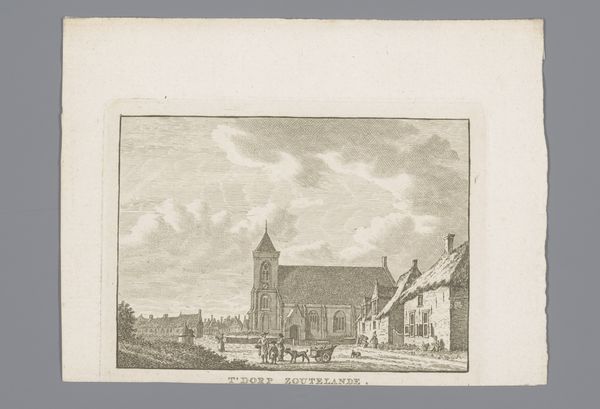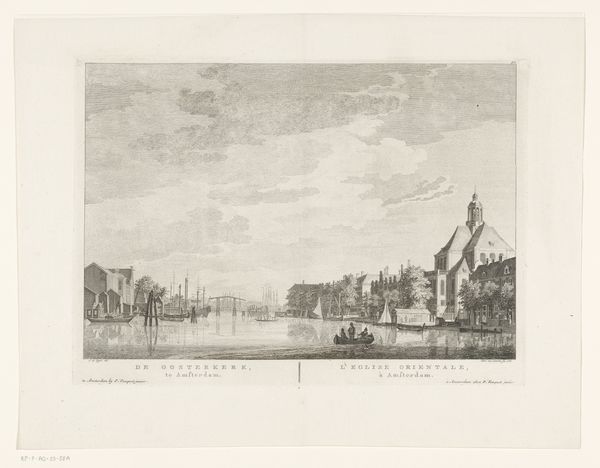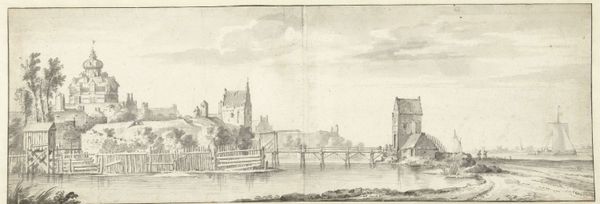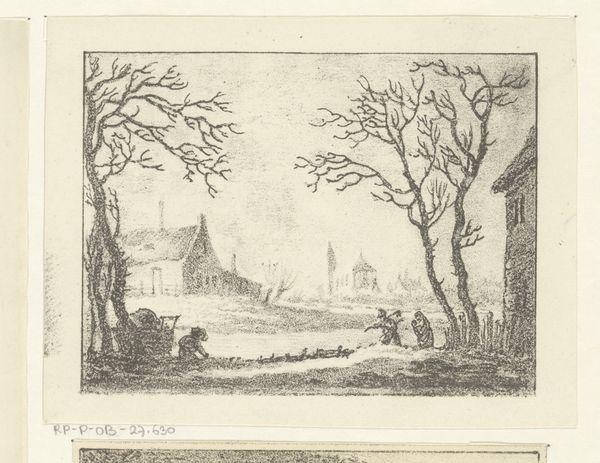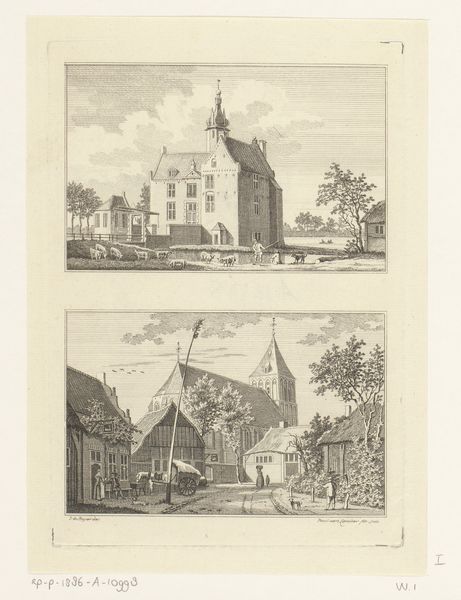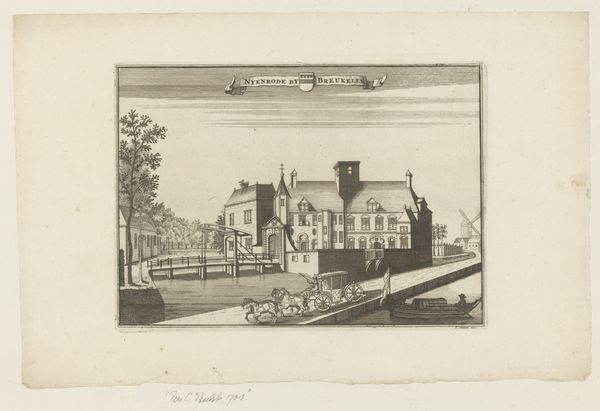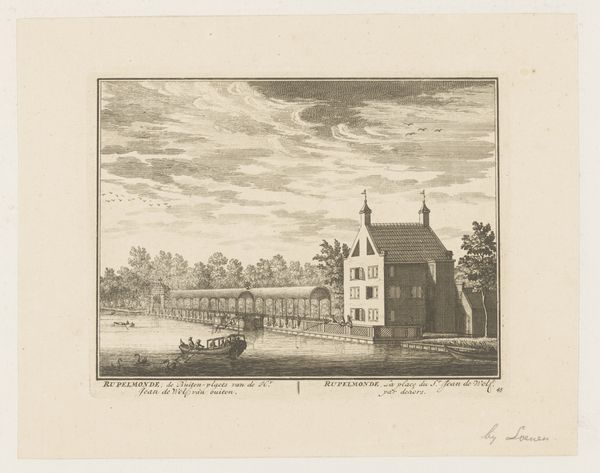
print, engraving
#
dutch-golden-age
# print
#
old engraving style
#
landscape
#
cityscape
#
engraving
Dimensions: height 87 mm, width 109 mm
Copyright: Rijks Museum: Open Domain
Hendrik Spilman made this print of Huis de Voorst using etching and engraving, sometime around 1744. The lines are fine and detailed, giving us a clear view of the house and its surroundings. If you look closely, you can see how the artist used different types of lines to create different effects; thicker lines for the darker areas, and thinner lines for the lighter ones. Prints like this were often made to document important buildings and landmarks. They were also a way for people to share images more widely, before the age of photography. The making of prints like this one involved a lot of skilled work. The artist would have to carefully draw the image onto a metal plate, and then use acid to etch the lines into the surface. This required patience, skill, and a deep understanding of materials. Thinking about the labor that went into this image, we can see that it is not just a picture, but also a product of human creativity and skill.
Comments
No comments
Be the first to comment and join the conversation on the ultimate creative platform.
